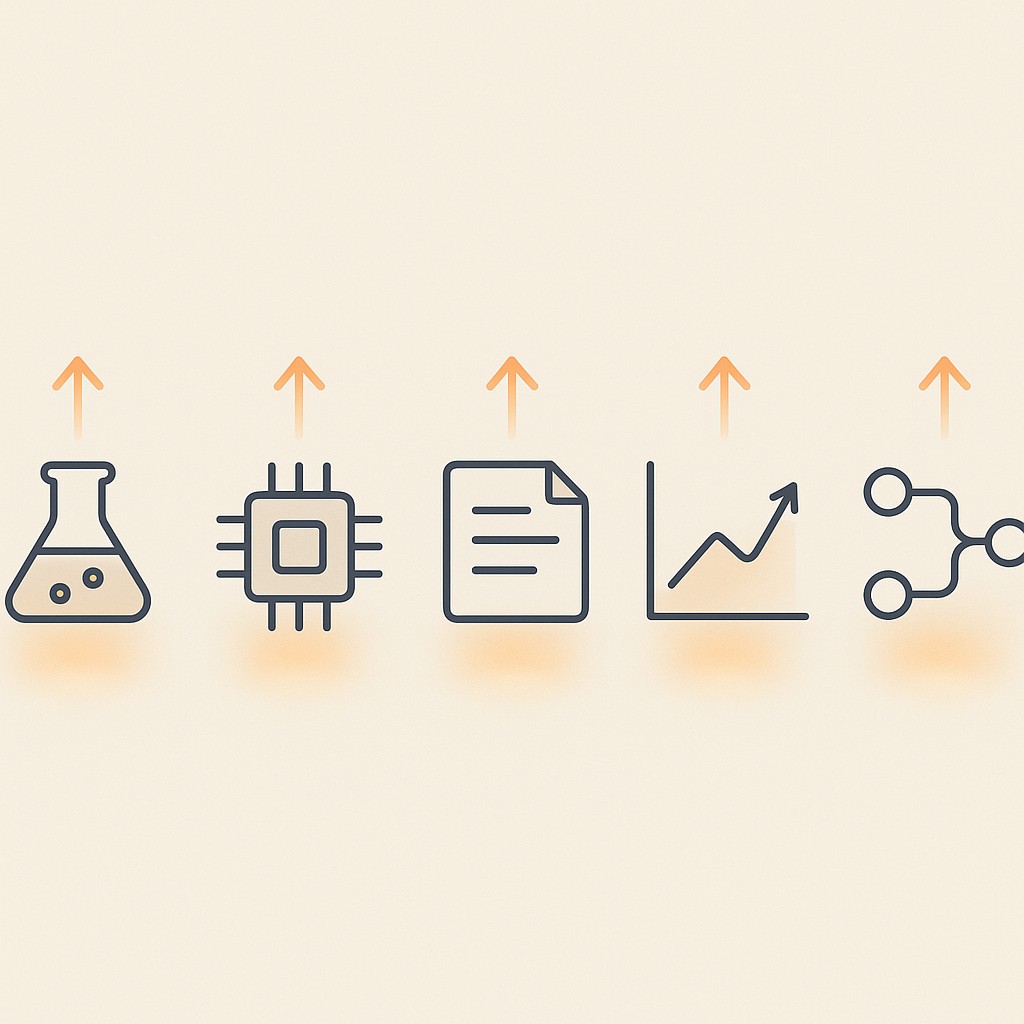Accelerate Engineering Experiments with AI: Proven Speed
Accelerate Engineering Experiments with AI: Proven Speed

Accelerate Engineering Experiments with AI: Changing the Economics of Experimentation
A few years back, spinning up even a single new feature felt like gambling with time I couldn’t afford to lose. Now, my team can accelerate engineering experiments with AI, launching five real, distinct approaches in one day. Four can crash and burn and we don’t blink. The fifth shows promise, and more importantly, we’re not stuck waiting weeks or bleeding budget just to learn what didn’t work. Moving this fast wasn’t an option before. Speed itself is the default now.

Here’s the pain I want to put on the table. The old way made every failed experiment feel like a giant setback. One flop could drain a sprint, tie up half the dev team, and leave everyone tiptoeing around the next try. When experiments are costly and slow, we end up waiting, planning, hesitating—instead of learning. You know the drill. The fear isn’t just about wasted money; it’s about burning scarce people-hours and losing the guts to aim at anything new.
When I think about resilience in my workflows, I don’t just mean uptime or slick, clean code. It’s not a compliance checkbox or a technical hygiene routine. I’m talking about how many shots you can take under tight constraints. If you can afford to miss, you’ll swing more often, and that’s where velocity lives.
At its core, resilience means I run my business with AI for resilient engineering, knowing mistakes are cheap and easy to recover from. The fear of missing goes away when you trust you’ll bounce back faster and smarter.
Why AI Flips the Numbers
The biggest shift I’ve seen is simple. AI shrinks the build and recovery loop from days to minutes. Before, every new experiment demanded a ton of work: hand-coding, manual testing, double-checking downstream risks from a failed rollout. Now I set up alternatives in parallel, each scoped tightly, and let them run at the same time.
Instead of one giant bet, we take a handful of smaller swings and watch what lands. The beauty here is AI doesn’t erase failure. It just makes it so fast and cheap to recover from that you end up craving that feedback. You’re not stuck in cleanup mode. You’re iterating. Mistakes transform into momentum. Instead of dreading dead ends, we start to count on them to show us where to dig next. The math changes. Velocity compounds because setbacks don’t linger.
This isn’t just about upside. It’s risk management in action. Think smaller misses and more attempts. With AI-enabled fast failure recovery, one failed shot means minutes lost, not days or weeks. That cushions your downside and keeps the runway open for bigger wins without jeopardizing the whole plan.
You can feel the difference in daily work. A broken deployment used to mean a scramble—logs, war rooms, endless waiting for rollback—and a botched campaign could burn a week’s budget in a day. Now, code glitches get fixed and re-deployed before the tea gets cold. A flop in marketing resets with fresh copy and targeting in the next hour, not next week. Recovery timelines have compressed thanks to AI-driven rapid iteration. Issues that once set us back for days now reset in minutes.
Parallelism is the new normal—letting you accelerate engineering experiments with AI and move fast without losing quality. You’re not stuck with a simple A/B test. You can go A/B/C/D/E in a single sprint. Each approach runs on its own, scope fenced in, clear rollback paths set. When the cost of running variants is this low, you let them battle it out—knowing you’ll only keep what works and fold what doesn’t, no regret.
How to Design Experiments That Fail Safely and Scale Fast
Start with small bets. Bound the blast radius on every experiment, no matter how promising it looks upfront. I scope each run to a single feature or metric, set clear success criteria anyone on the team can check, and fix the budget and timeline before we even start coding. It’s not about micromanaging. It’s about making outcomes predictable.
When experiments are boxed in—one variable, a two-day window, strict spend—failure isn’t scary. It’s just another data point, and you know exactly what it costs you. This approach means you can run more attempts without worrying that one misfire will spiral into a problem. I’ve found that when folks see boundaries in place, they stop getting anxious about what could go wrong and start focusing on what might actually work.
If something does blow up, you want rollback to be instant, not just fast. Feature flags, short-lived branches, and automated scripts make all the difference here. Rolling back a feature can be instant. Tools now let you revert or automate the process via the Unleash API. I’ll be honest: before we wired these in, I’d catch myself hesitating to push out variants just because cleanup felt heavy. Now I know any bad idea can be unwound in minutes, so I try more.
To keep momentum without draining team resources, plug in auto-fix paths. In our shop, CI agents drive rapid prototyping with AI by proposing simple code fixes, regenerating broken tests, and patching things up when builds fail—no handholding required. Early on, I leaned hard on AI to temporarily stand in for contractors or advisors, saving people-hours until the stakes got higher or the prototype was ready for real scrutiny.
Here’s where things really speed up. Schedule daily cycles of parallel engineering experiments where five small variants run side by side—each protected by its own gated deploy, telemetry, and fast rollback script. Sometimes you get more leverage by letting a handful of agents generate output in parallel, then picking the winner through consensus sampling-and-voting. The net effect: with less capital, less time, and less dependency on others, you can keep iterating until something sticks. No one ties up the whole stack waiting for one big experiment. You’re always moving, learning from several shots at once.
Funny thing—last winter, I found myself troubleshooting a batch of failed deploys one night while half-watching a documentary about shipwrecks. I kept pausing it to bounce between logs and error traces, and for a minute I honestly couldn’t tell which disaster was more fixable. It sounds random, but it stuck with me; most messes feel huge until you have a way to clean up fast. The difference is knowing you’ll get another swing, not sitting in wreckage wondering what’s sunk.
I used to climb a lot, and one thing rock climbing taught me: the skill isn’t never falling—it’s falling safely, then getting back on the wall as fast as possible. The same applies here. You want your experiments to “fall” without taking you down, and to be ready to swing again with almost no reset time. That’s where progress lives.
De-risking Rapid Experimentation: Guardrails, Metrics, and Smart Design
Let’s talk about the hidden costs. They’re real, and ignoring them will bite you later. Every AI-driven experiment eats up compute, demands your attention (even just to check dashboards), and encourages a sort of context-switching that quietly drains energy. Six months ago I thought extra automation would solve all this, but without firm limits it just makes the leaks faster. I started setting cost and time boundaries up front.
Monitoring compliance as you go keeps experiments lean and avoids the slow bleed. Think auto-shutdowns for runaway agents and templates so no one has to reinvent the setup every time. I’m not immune; I’ve woken up to a “you used 6X your budget” email just from forgetting to set limits. Don’t let that happen to you.
Reliability is where most people get cold feet about using AI for core processes. The truth is, models will hiccup. It’s not magic. The trick I use: run everything through evaluations and static checks, keep a human gate on critical deploys, and never let AI make irreversible business calls on its own. AI shines in the build-and-recover loop, but your irreversible decisions should always pass through human eyes first.
Initial setup can feel like a slog, no getting around that. But once you’ve baked in guardrails and templates for your common cycles, throughput compounds. That sprint with five-in-a-day attempts only happened because patterns were already built in.
Here’s how I track whether things are working: I look at what each failed experiment costs (in dollars and hours), how fast recovery happens, how many variants we run per day, and the rollback success rate. You’ll want to watch those metrics fall until failure becomes leverage. The endgame isn’t zero failures—it’s failure that’s cheaper, recovery that’s faster, and every setback turning into momentum. If your cost per miss and time to bounce back are dropping, you’re building resilience. That’s what lets you press repeat, not pause, every day.
I haven’t totally solved the tension between raw velocity and keeping people from burning out on context switching. Sometimes it works, sometimes there’s noise.
Your Practical Playbook for Running Multiple Experiments—Daily, Safely, and Cheap
First, don’t let “experiment” mean big risky bets—pick three to five tiny tests. Nail down exactly what you want to learn from each. Define a clear scope, set success metrics any teammate can check, cap the time (I shoot for same-day results), and spell out your rollback plan before touching a line of code. Most misses come from confusion, not complexity, so wire up telemetry and alerts from the start. Knowing you’ve built in “abort and rewind” lowers the stakes, making it much easier to just get moving.
Next, turn AI loose. Use prompts to explore a spread of alternative strategies, not just one. I’ll often ask agents to generate both naive and clever versions, scaffold code and basic tests for all, and spin up branches with PRs auto-assigned to parallel runs. What I’ve seen is that when you frame requests for diversity—“show me five distinct solves”—you sidestep groupthink and catch out-of-the-box solutions alongside the obvious ones.
Here’s my cycle. Morning builds go live, midday you evaluate results and check telemetry, and by afternoon you’ve rolled back duds and patched up broken runs—aiming for minutes spent fixing, not days lost. It’s a “test and reset” rhythm you can repeat all week without killing momentum. Because builds are parallel and recoveries auto-scripted, resets barely dent your schedule. It’s actually funny thinking back to those rollbacks that used to trigger an all-hands-on-deck standup. Now, you just rerun, move on, and fit more attempts in the same window.
If you want the same fast, bounded cycles for content, use our app to generate several AI drafts at once, compare results, and ship the winner by end of day.
This is the real shift. When every shot is bounded, rollback is instant, and you know you’ll auto-fix the messy parts, taking risks doesn’t scare you. The ability to take shots in my business without fear of missing—that’s what resilience actually looks like.
Enjoyed this post? For more insights on engineering leadership, mindful productivity, and navigating the modern workday, follow me on LinkedIn to stay inspired and join the conversation.
